If you haven’t already, you can purchase your Belcarra blouse pattern in our shop – paper pattern here, or PDF pattern here. Or pick it up from one of our lovely retailers!
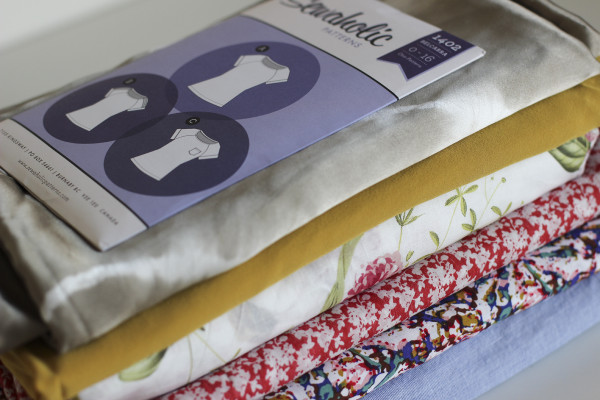 So let’s dive into this and talk about fabric options!
So let’s dive into this and talk about fabric options!
Here is our sizing chart and the yardage requirements for this pattern, for your reference.
This blouse is a stash buster! The most you’ll need is 2 1/4 yards in a 45″ fabric. Don’t forget though, this is the perfect blouse for mixing fabrics, and I bet if you had a bit less fabric than you need, you’ll probably be able to squeeze the pieces in. So what fabrics do we suggest? We recommend lightweight woven fabrics. That could be anything from silk charmeuse or crepe, rayon challis, cotton lawn or voile, or shirting. In the spirit of stash busting, I turned to my fabric stash and pulled some examples to show you.
Silk Charmeuse is drapey, lightweight, breathable and lustrous. Not everyone likes the sheen of a charmeuse or satin, but often, you can actually use the backside of this fabric! If the print shows through on the back side, there is nothing wrong with using this as the “right side”. Keep in mind, silk charmeuse can be tough to cut and sew.
Silk Crepe has almost all of the same properties as a silk charmeuse. Drapey, lightweight, breathable… and it’s not as shiny, and easier to handle. This is one of my favorite fabrics! The one you see above is a silk crepe de chine.
Cotton Voile or Cotton Lawn is a great choice for beginners. It has a nice crisp drape and it’s not too stiff. It’s also super easy to cut, sew, and press. Cotton is breathable of course, and washable! Cotton voile, and cotton lawn are very similar. Lawn’s just tend to be a bit more opaque, and have a bit of a softer hand feel and drape.
Here is another example of a cotton voile! I wanted to show you this because it’s still called a voile, but it’s a bit more sheer that the previous fabric. A semi sheer voile like this would work great for this blouse, if you’re okay with your finished blouse being a bit see-through.
Rayon Challis is soft, breathable, and drapes beautifully. I love this fabric but there are a couple of things to consider. First of all, rayon shrinks a lot, so pre-wash your fabric once or even twice to make sure you are pre-shrinking it before cutting into it. Secondly, rayon wrinkles quite easily, so you will definitely have to iron your blouse regularly if you go with a rayon fabric. Just some things to keep in mind!
Shirting is usually 100% cotton or a blend of cotton and nylon or polyester or spandex or a combination of a few. It’s nice and crisp, breathable, and easy to cut, sew, and press (another great choice for beginners!).
Remember to always pre-wash or pre-treat your fabrics the way you intend to care for the finished garment. Pre-washing will often shrink the fabric, so that your final garment doesn’t shrink on you!
So that covers all of our fabric suggestions! Of course, feel free to experiment. This top could work in a stable knit or sweater knit, lace, eyelet, leather… the possibilities are endless!

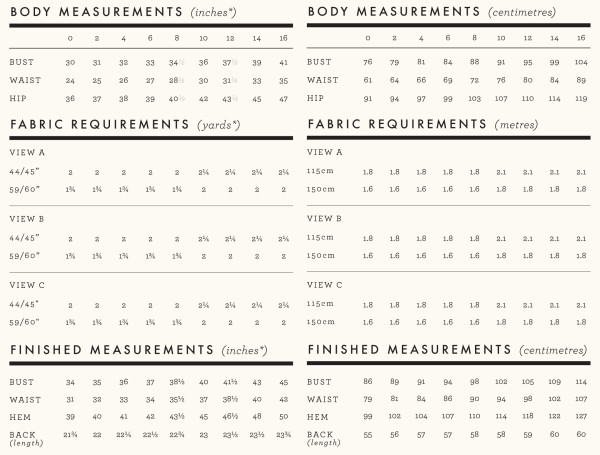
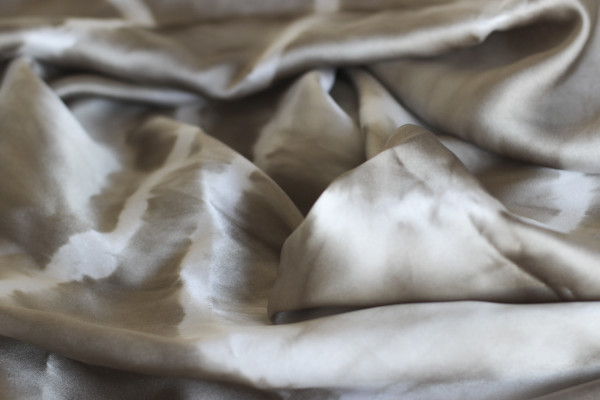
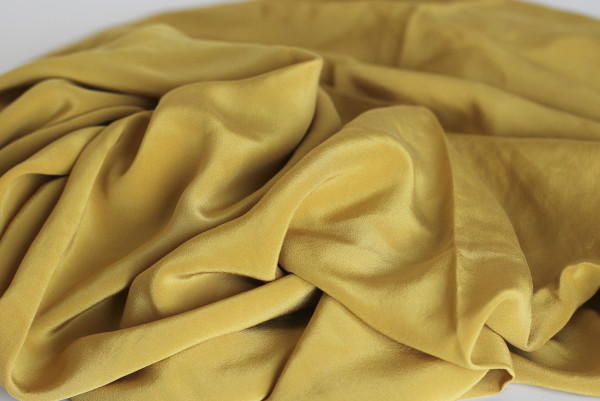

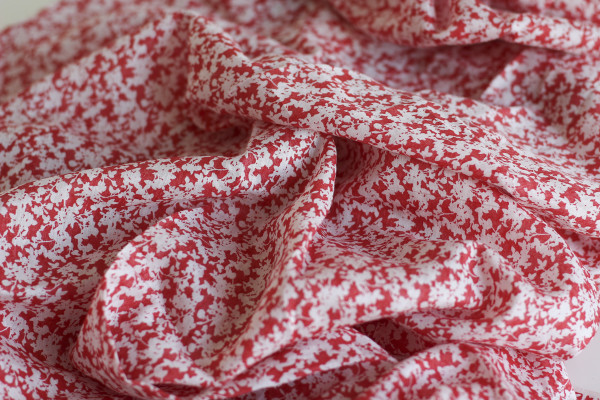
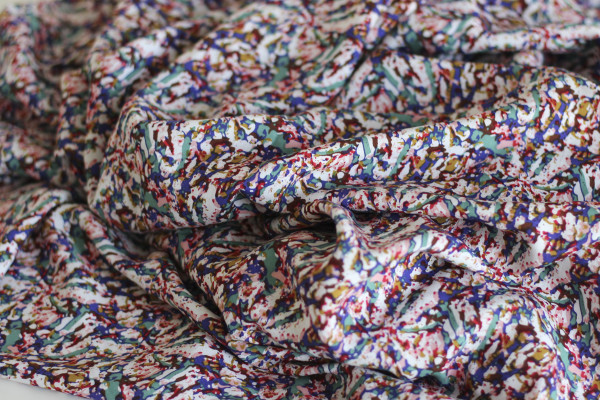
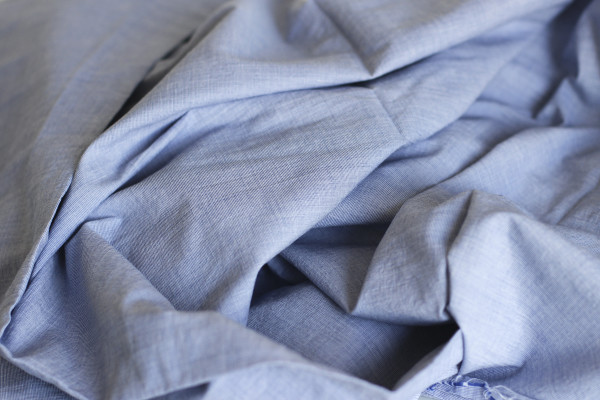
Great fabric suggestions. The Belcarra is definetly on my list. Even if I wont have time for this sew-along.
I love the print on that rayon challis! If you don’t mind, where did you get it? I’m a beginner when it comes to garment sewing and have picked out a cotton lawn for this pattern. Glad to know it’s beginner friendly!
Hi Caitlin! I got the rayon challis at Dressew Supply, a local fabric shop in Vancouver. :)
I am just back from a conference and thought I would have to hustle to catch up on this sew-along. I have my fabric already and am just waiting for the FBA tomorrow.
I just download the pattern! I’m looking forward to picking a fabric from my stash and doing my first sew along!
Would double gauze work? I have some in my stash I’ve wanted to use for a while. It’s a little less than the required yardage, so I’m wondering if I could use a different fabric for the neckline binding?
Hi Susanne! Yes double gauze would work great. You might even be able to squeeze all the pieces into less yardage, including the neck binding, depending on your size. Otherwise, a different fabric like a cotton lawn or voile would be fine for the neck binding.
Hi Caroline, thanks for all the great information regarding the different fabrics. This is an area where I need more education. I am considering either the silk charmeuse or the silk crepe. Can either of these be washed prior or do I have to dry clean silk? I have heard others say it is ok to wash silk fabrics if you do so before it is cut out. Would you agree with this?
Hi Tina, yes, most silks you can hand wash. For a silk charmeuse or crepe, you should be fine to wash it prior to cutting, and even after the garment is sewn. My tips: hand wash in cool water with really gentle detergent or hand washing liquid (we like the brand “soak” that is sold at a lot of yarn shops). Don’t agitate the silk too much, just swirl it around, let it soak, and then rinse. To dry it, use a towel to sandwich the fabric and press it to draw the moisture out, and then hang to dry (do not wring the fabric, and hang it away from the sun to dry). Keep in mind washed silk has a slightly different texture and handfeel, but some people prefer it! It’s quite lovely. Good luck!
I am so glad you will show how to narrow the neckline. I love this blouse, but, for myself, I need a little more coverage. If the change looks like something I can handle, this pattern will go to the top of my wish list! Also, would it be possible to show how to figure out if an adjustment for wide shoulders would be needed, and how to make that adjustment? The blouse looks like it might not need much as designed because of the ease of fit, but I’m concerned about how that might change if I narrow the neckline.
Thank you to both Caroline and Tasia for such a welcoming and helpful website. I visit often, and am grateful for the work you do!
Hi Lara, we are showing a really simple tutorial on how to narrow the neckline, this will go up tomorrow. It’s not a major change from the current neckline, just a bit narrower but you can use the method I show to narrow it even more.
I don’t think you would need a wide shoulder adjustment because there is quite a lot of ease in there. I don’t think I’ll be able to cover this during the sew-along (too much to do, too little time!) but if you make a muslin and still feel you would need this adjustment, send us an e-mail (info[at]sewaholic[dot]net) and we’d be happy to give you some guidance on how you could do that.
Thanks Lara!
Thank you, Caroline
Settle a bet for me–does “voile” rhyme with “foil” or “ball”? I’ve heard both and it seems nobody knows which is “right” :)
LOL. Well, I am from Montreal, so the french in me says that voile rhymes with “wall”… this is the right way to say it, in my book! However after living in Vancouver for almost 4 years, I tend to say it like “foil” or else people go…HUH? :)
I am a little sad your blouse does not come in a larger size!!!
Hi Vicci, I’m so sorry that you’re sad! We so wish we could offer larger sizes, in the past we just did not have the resources to develop a larger range of sizes. It’s something we are definitely considering for the future, especially now that we are able to make PDF patterns. Would you mind sending us some more information to our info[at]sewaholic[dot]net e-mail? If you don’t mind sharing, we would love to know what size you are hoping for, and which patterns from our current line up you would like us to offer in plus size. Thanks for voicing your concern, we take this feedback to heart.
All the best!
Would it be very difficult to scale up to a size 18? My sister is just above the sizing on the envelope and I really want to make this shirt for her! (I already did actually, using the incorrect measurements she gave me and of course it didn’t fit, grr!)
Hi Caroline, Can you also let us know how to add an exposed zipper to the centre back?
Hi Tracy! I wont be showing this in the sew-along, but there are some great tutorials online that you could use. The simplest way would be to add a seam up the back of the blouse, so add 5/8″ seam allowance to your center back seam and then cut 2 of the back piece (instead of cut one on fold). Here are some good tutorials I found:
http://patternrunway.com/how-tos/how-to-sew-an-exposed-zipper-with-a-seam/
http://www.keightlystudio.com/keightlyblog/2013/8/19/how-to-sew-an-exposed-zipper
http://www.youtube.com/watch?v=8qRzjoTXWQw
Hope this helps! Let us know if you need more guidance :)